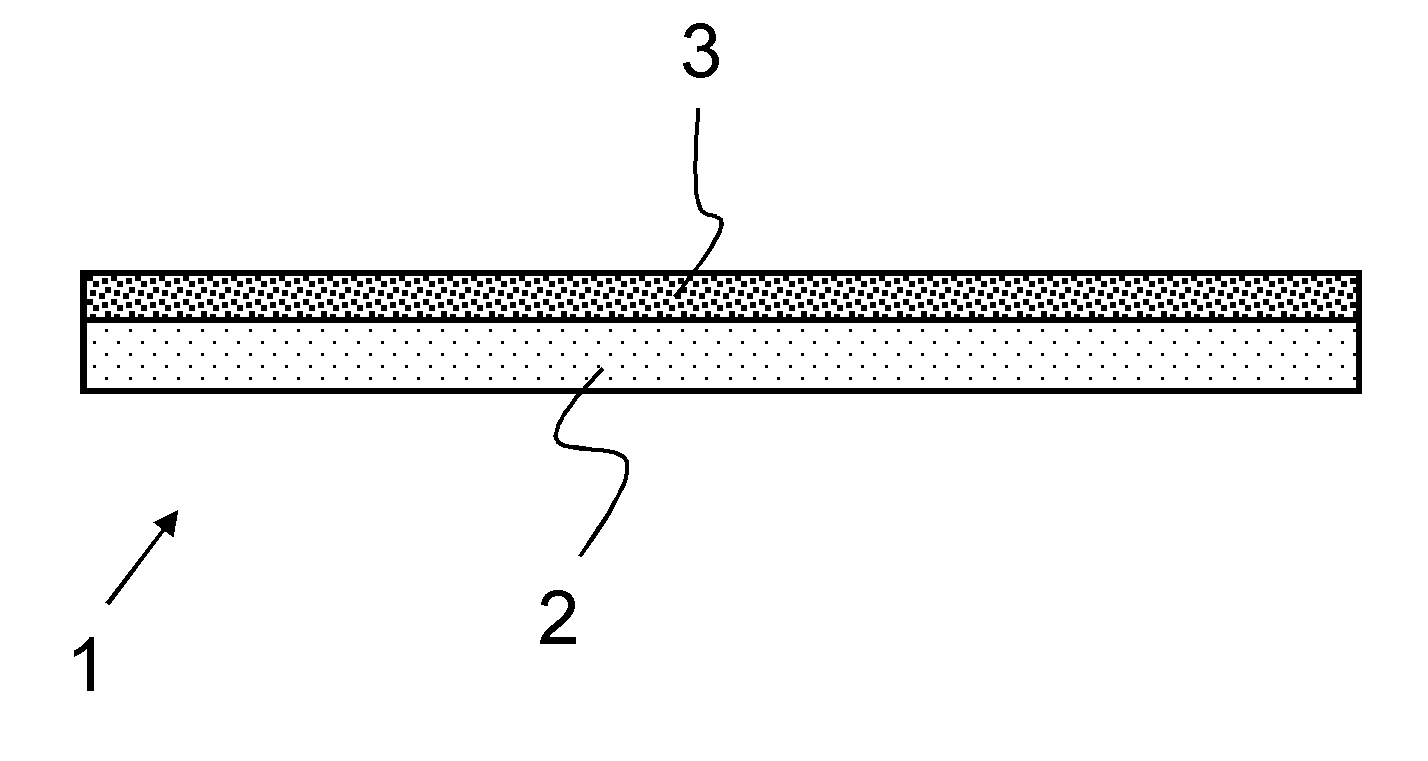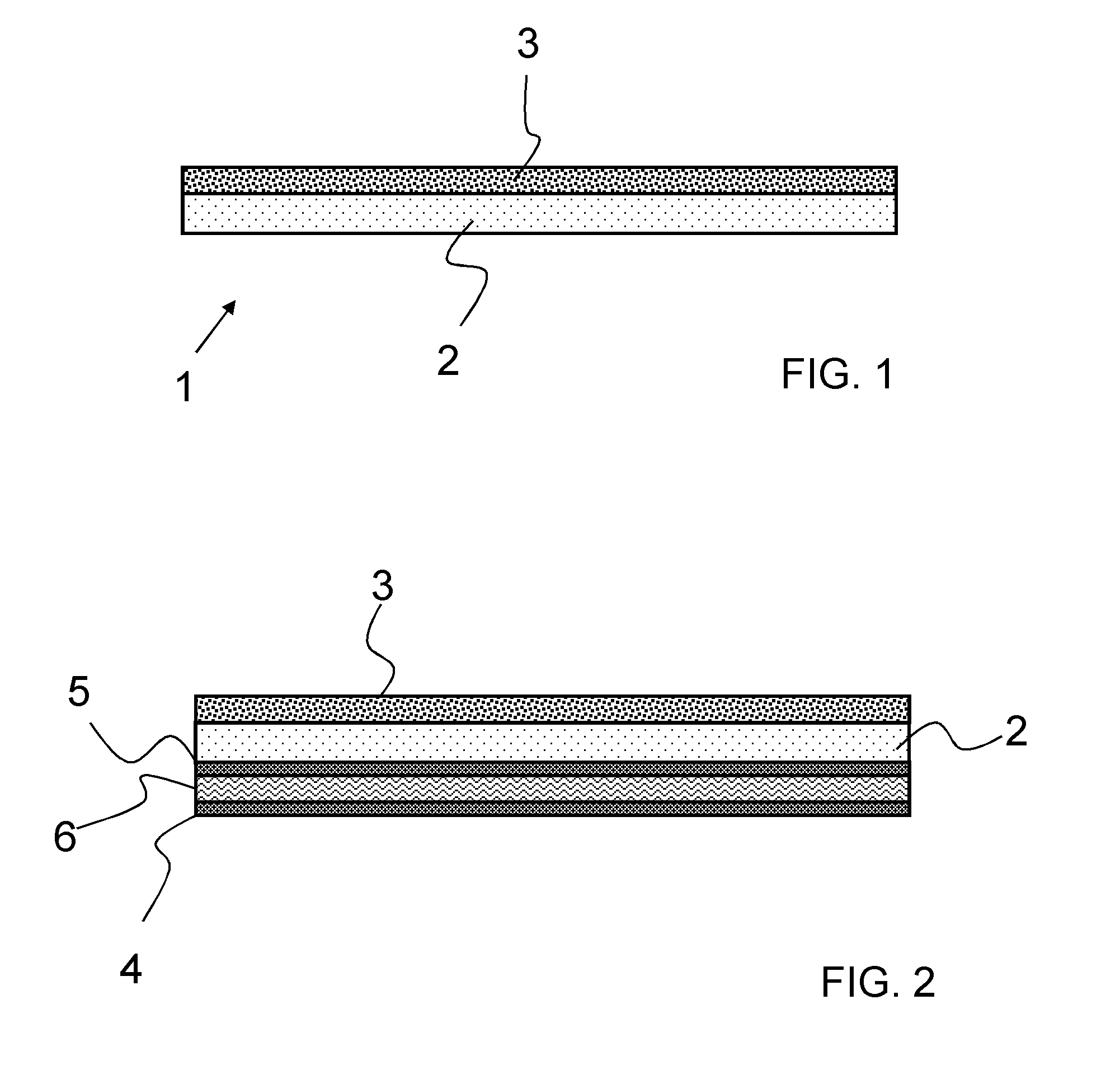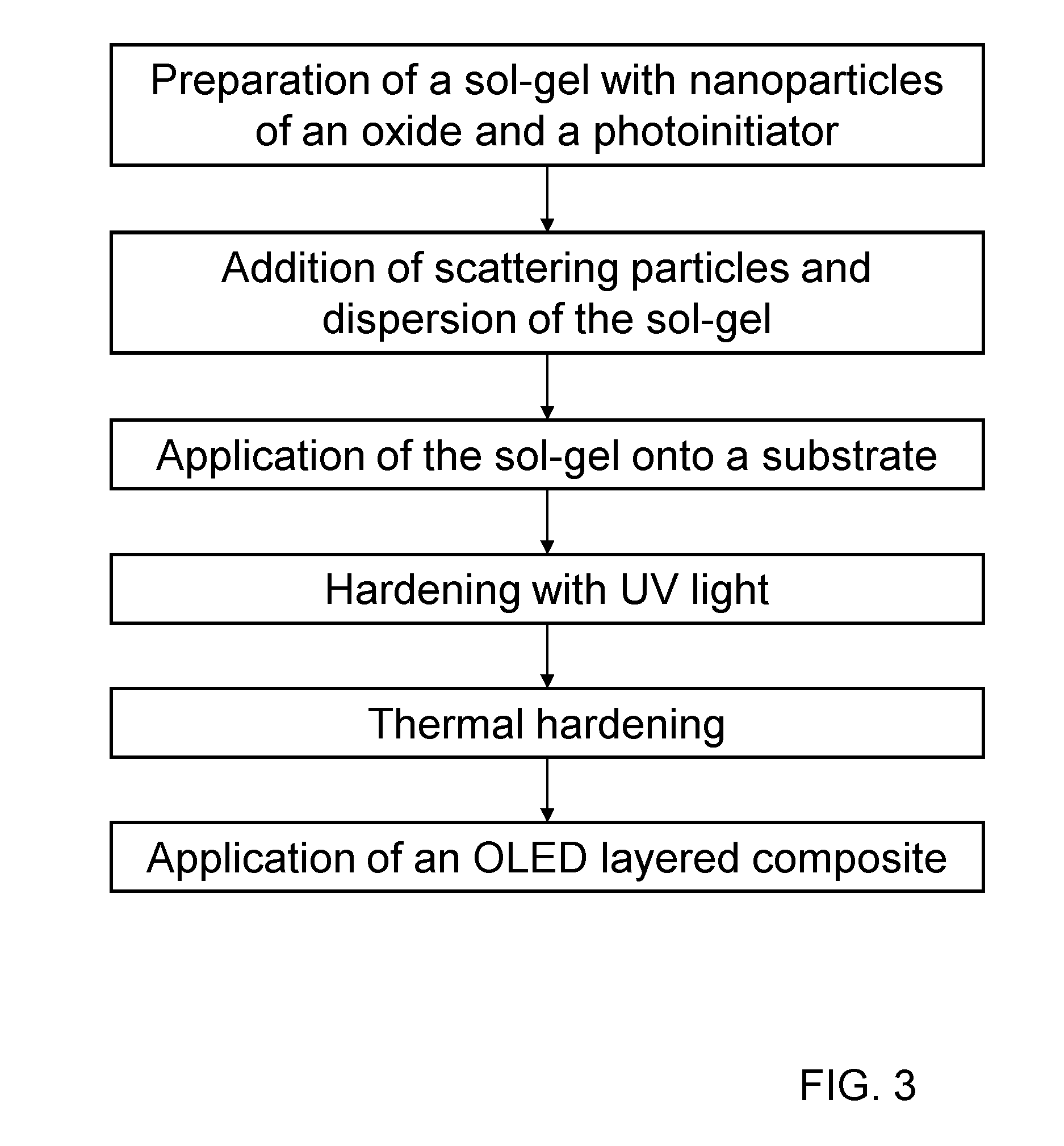Substrate glass for leds with layer containing scattering particles and method for production thereof
a technology of scattering particles and substrate glass, which is applied in the field of composite materials, can solve the problems of reducing efficiency, limiting subsequent processing steps, and low thermal and mechanical resistance, and achieves the effect of reducing the loss of light due to total reflection and being easy to produ
- Summary
- Abstract
- Description
- Claims
- Application Information
AI Technical Summary
Benefits of technology
Problems solved by technology
Method used
Image
Examples
Embodiment Construction
The invention will be explained in further detail below with reference to FIGS. 1 to 3.
FIG. 1 shows a composite material 1 that comprises a glass substrate 2 and a coating 3.
The coating 3 is a sol-gel layer to which are added scattering particles of an oxide with an average diameter between 100 nm and 200 μm, and that also comprises oxide nanoparticles to increase the index of refraction.
Losses of light due to total reflection are reduced by the coating 3, which has an index of refraction >1.7.
FIG. 2 shows an OLED that comprises the composite material.
Besides the composite material composed of the substrate 2 and the coating 3, the OLED also comprises an emitter layer 6 that is positioned between anode 4 and cathode 5.
The layers of the OLED 4, 5, 6 are directly deposited on the substrate glass 2. In this example of embodiment the coating 3 comprising the scattering particles is positioned on the side opposite the emitter layer 6. It is to be understood that the coating 3 can be adja...
PUM
| Property | Measurement | Unit |
|---|---|---|
| Temperature | aaaaa | aaaaa |
| Temperature | aaaaa | aaaaa |
| Fraction | aaaaa | aaaaa |
Abstract
Description
Claims
Application Information
 Login to View More
Login to View More - R&D
- Intellectual Property
- Life Sciences
- Materials
- Tech Scout
- Unparalleled Data Quality
- Higher Quality Content
- 60% Fewer Hallucinations
Browse by: Latest US Patents, China's latest patents, Technical Efficacy Thesaurus, Application Domain, Technology Topic, Popular Technical Reports.
© 2025 PatSnap. All rights reserved.Legal|Privacy policy|Modern Slavery Act Transparency Statement|Sitemap|About US| Contact US: help@patsnap.com



